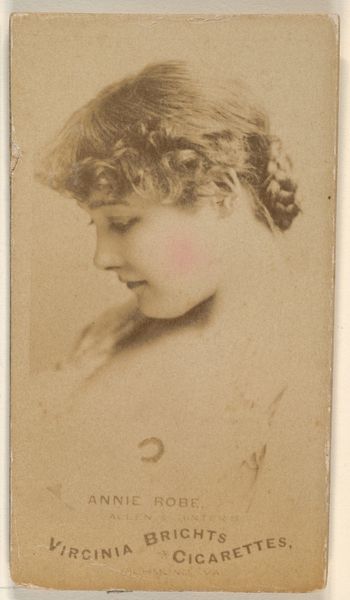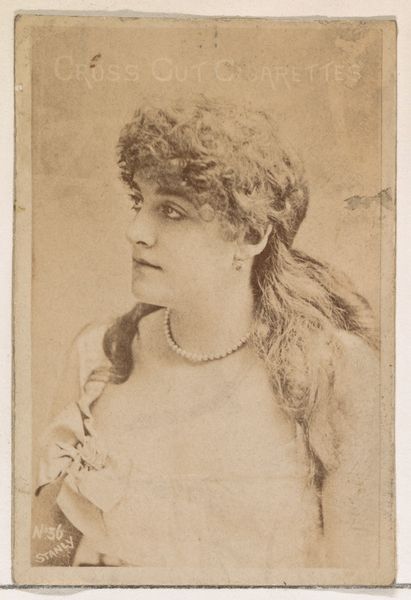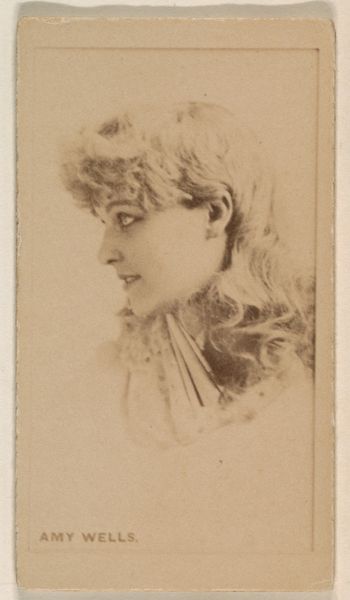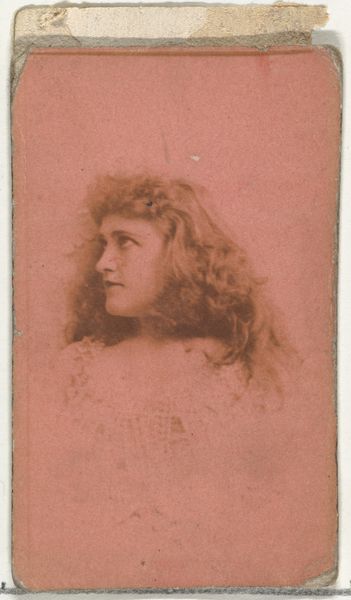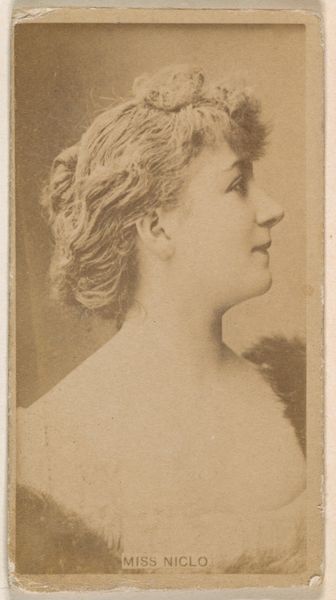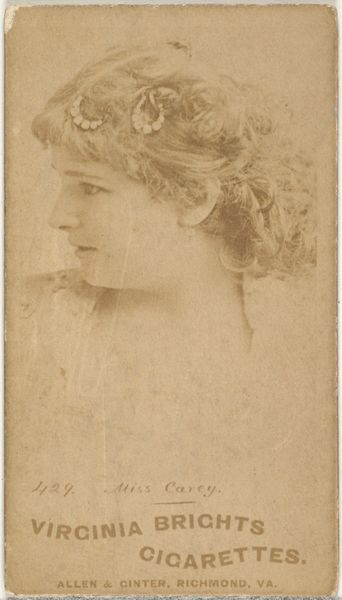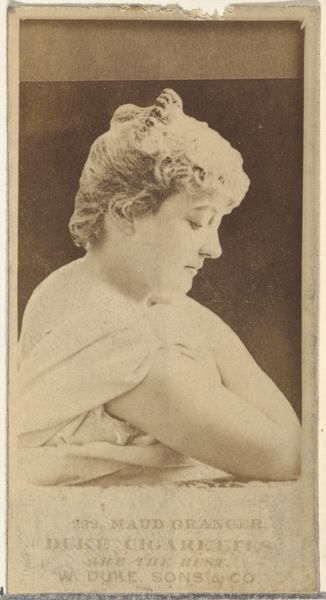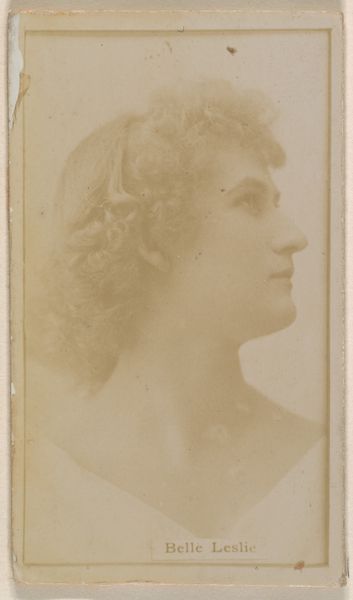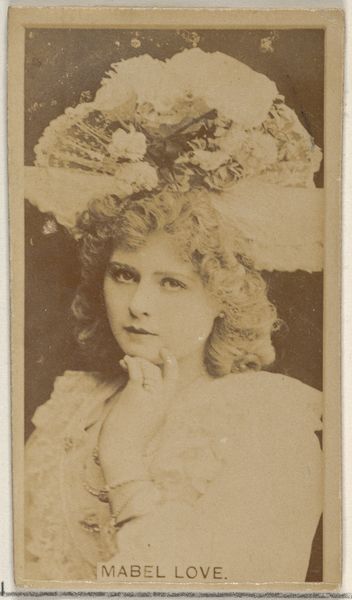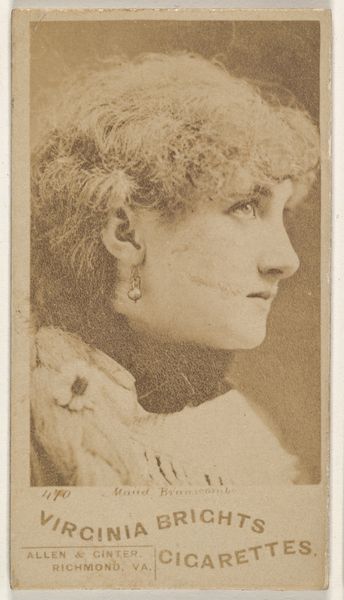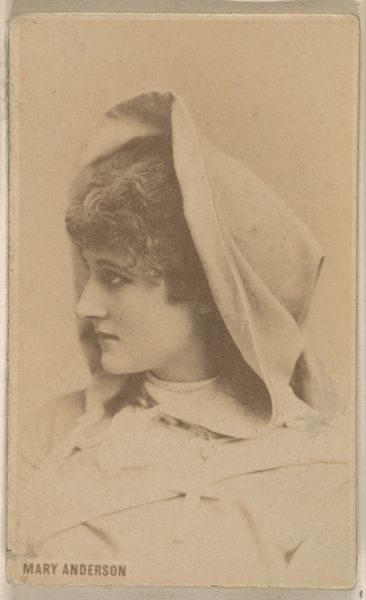
Isadore Rush, from the Actresses series (N245) issued by Kinney Brothers to promote Sweet Caporal Cigarettes 1890
0:00
0:00
drawing, print, photography
#
portrait
#
drawing
# print
#
figuration
#
photography
Dimensions: Sheet: 2 1/2 × 1 7/16 in. (6.4 × 3.7 cm)
Copyright: Public Domain
Curator: Here we have a carte-de-visite, “Isadore Rush, from the Actresses series,” produced by Kinney Brothers around 1890 as a promotional item for Sweet Caporal Cigarettes. What are your first impressions? Editor: Sepia-toned and intimate, it feels less like advertising and more like a fragment of a lost, glamorous era. The small format invites you in, as though sharing a secret. Curator: The image offers more than nostalgia, though. Consider the societal context. These cards circulated widely. How do you see its implications within broader gendered roles of that era? Editor: For me, it raises the question of production, actually. How many were made, by whom, and what were the labor conditions like? These weren't exactly considered "art," so the artists may have had no creative control. Curator: True, these existed in a commercial space. It highlights the actress's position as a commodity. The pose itself—the delicate side profile, the coy gaze—reinforces Victorian ideals of feminine beauty, placing Isadore Rush within very constrained representational conventions. Editor: That said, there is agency as a performer during a time where performance provided access to power, voice, and influence not usually available. Can we appreciate the ways Isadore Rush's persona may have been actively shaped? It is both constructed *and* utilized. Curator: An important distinction. Rush's ability to cultivate and circulate her image, however mediated by commerce, underscores female performativity at the turn of the century. Yet, let's remember its link to tobacco—an industry entangled with issues of exploitation across global networks. Editor: That brings to mind how these mass-produced images contribute to the overall material culture. How the circulation of something ephemeral like this affected demand, distribution, or manufacturing of cigarettes brings into focus the power of images. Curator: Reflecting on the ways historical power structures influence image making makes us consider the ethical responsibilities involved in depicting human figures across different eras. It compels a necessary dialogue between art, capitalism, and identity. Editor: Indeed. Seeing her rendered as a mass-produced object forces us to consider our own role in assigning value and meaning to material artifacts of this type.
Comments
No comments
Be the first to comment and join the conversation on the ultimate creative platform.
